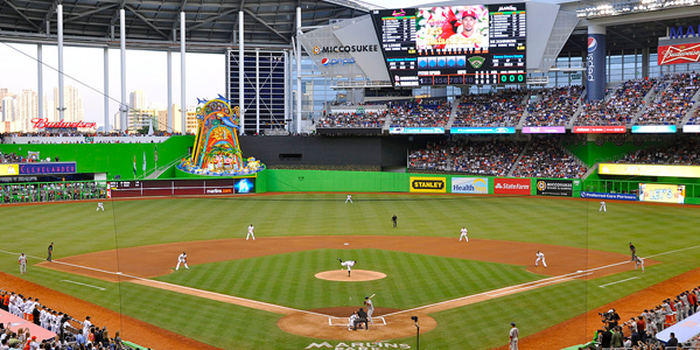Major League Baseball = Major League Science
Think baseball is all about runs, outs, balls, and strikes? What about physics, biomechanics, and statistics? Explore the science of baseball!

Baseball fever is raging at my house. The first order of business every morning is to find out if our favorite team won or lost the previous night's game. Equally important is checking to see if our team's closest rival won or lost. All of this baseball excitement will culminate in the 2014 World Series, which begins on October 21st.
These championship games, played between the winners of the American League and the National League, will showcase of some of the best baseball skills that Major League Baseball has to offer. To prepare, the players spend long hours practicing their skills, strengthening their bodies, and finding the right equipment for getting the job done. And, although baseball is a game, you can bet that it is serious business for the coaches and players involved.
Home Run Science
While trial and error can be part of honing sports skills, very often, there's also science behind finding the optimal way to do your best. For example, in baseball, coaches carefully track the results of a player's at-bats to help them improve their batting skills. Opposing coaches use the same information to create the best defense against that player. Similarly, coaches carefully study a pitcher's throwing form to help him find the fastest and most accurate method.
Are you batty for baseball? Whether you love to take your turn at the plate, or get all fired up about baseball statistics, Science Buddies has Sports Science Project Ideas to get you started on a home run science project:
- Baseball Bat Debate: What's Better, Wood or Aluminum?: Hitting baseballs is science? Yep, so long as you keep track of the data! Head out to a field with two different types of bats to see if you can put an end to the wood vs. aluminum debate.
- The Physics of Baseball and Hit Charts: What influences a baseball's trajectory off of a bat? Create a mini batting machine with a ping pong ball catapult and then, just like the big leaguers, examine your results on a scatter plot diagram. How do variables such as bat speed affect where the ball lands?
- The Biomechanics of Pitching: What is the key to throwing a baseball fast and accurately? Grab some baseball buddies and explore what happens to pitch speed when you change the way you throw the ball.
- How Do Baseball Stadium Dimensions Affect Batting Statistics?*: Does it matter which field you play on? Not all baseball fields are created equally. If you love math, delve into baseball batting statistics to explore the "ballpark effect."
- The Physics of Cheating in Baseball: Momentum, a combination of speed and weight, is what makes a baseball fly. Experiment with solid wood and "corked" bats to see if you can find the best bat weight and swing speed for hitting a home run.
And just in case you are wondering, the 2015 season opener is on April 4. Not that anyone in my house will be counting the days. Mark your calendars, baseball fans, and see you at the park!
Categories:
You Might Also Enjoy These Related Posts:
- Plastics and Earth Day - Science Projects
- Arduino Science Projects and Physical Computing
- 10+ Robotics Projects with the BlueBot Kit
- 5 STEM Activities with Marshmallow Peeps
- March Madness Basketball Science Projects: Sports Science Experiments
- Women in STEM! More than 60 Scientists and Engineers for Women's History Month
- Explore Artificial Intelligence and Machine Learning with Student AI Projects
- 10 Reasons to Do the Rubber Band Car Engineering Challenge










